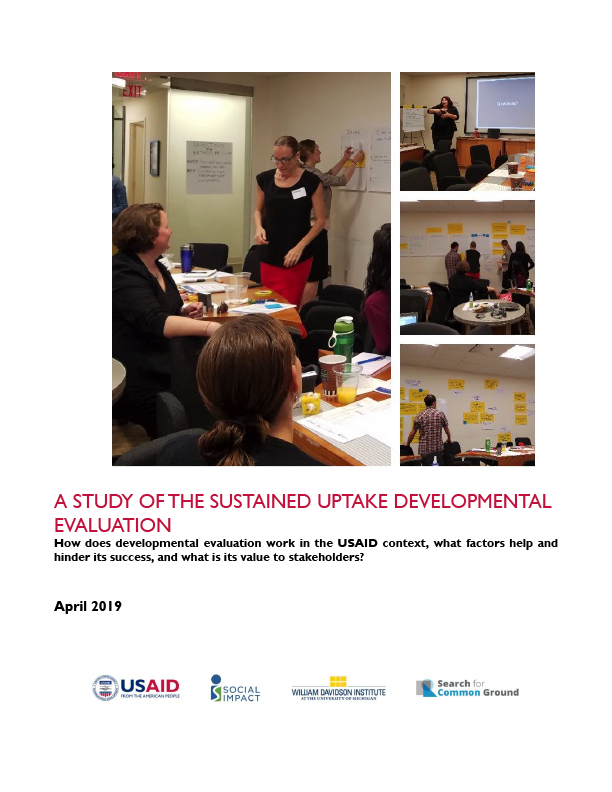- What We Do
- Agriculture and Food Security
- Democracy, Human Rights and Governance
- Economic Growth and Trade
- Education
- Environment and Global Climate Change
- Gender Equality and Women's Empowerment
- Global Health
- Humanitarian Assistance
- Transformation at USAID
- Water and Sanitation
- Working in Crises and Conflict
- U.S. Global Development Lab
Speeches Shim
How does developmental evaluation work in the USAID context, what factors help and hinder its success, and what is its value to stakeholders?
April 2019
This report is made possible by the support of the American people through the United States Agency for International Development (USAID). The contents of this presentation are the sole responsibility of the DEPA-MERL consortium and do not necessarily reflect the views of USAID or the US government.
The Developmental Evaluation Pilot Activity-Monitoring, Evaluation, Research, and Learning (DEPA-MERL)— situated in the US Global Development Lab’s Monitoring, Evaluation, Research, and Learning Innovations Program at the United States Agency for International Development (USAID)—is testing the effectiveness of developmental evaluation in the USAID context. Developmental evaluation (DE) was created to evaluate innovative programs that operate in complex environments and are thus expected to adapt over time. From March 2017 to December 2018, DEPA-MERL conducted a DE with the US Global Development Lab (hereinafter, “the Lab”). The Sustained Uptake DE (hereinafter, “the Uptake DE”) was conducted in service of the Lab’s mission to source, test, and scale development solutions. The Uptake DE helped several of the Lab’s teams to collect, analyze, and disseminate learnings regarding the sustained uptake1 of innovations these teams seek to promote within and beyond USAID.


Comment
Make a general inquiry or suggest an improvement.